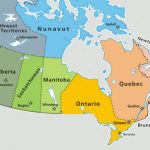Who needs documentation? Just file anyway and hope no one checks … That’s probably not the best strategy.
- Last year the CRA visited 65% of new claimants, and this year its taking steps to increase that to 100%. So expect a visit.
- Once you are in the CRA’s good books, you can have a very long stretch of claims before you see them again for a random spot check. Conversely, once you are in their bad books, you can look forward to seeing them every year for at least 2-3 years of investing time demonstrating that you are compliant
- Although there are court cases that do reinforce the fact that verbal testimony is acceptable in describing your SR&ED, it’s very difficult (if not impossible) to convince the CRA that you followed a systematic approach, as required to follow the SR&ED program, when you didn’t document anything. If you want to challenge that, prepare to get into the 10 year queue for tax court.
We pull together what you have:
But how do we pull it together?
- Salaries and Hours – If you have employees, you have T4s, the trick is determining what portion of those T4s belong to the SR&ED. There are several different approaches, however one effective way is to go through emails and calendars and put together a reasonable picture of your time for the last fiscal year. There will be a lot of assumptions, so you will need to make sure they are defendable. This is even more important for senior management and particularly the owner’s time.
- Technical documentation – Since you probably weren’t keeping a journal to document what hypotheses you had, what you did to validate them, and how much time you spent, you are going to have to put together that narrative based on what you have now:
- Emails and meeting minutes – can show what problems were encountered, what the plan was, and who was actioned to work on them
- Look at sources where you are tracking issues like, meetings, logs, lock out / tag out records, where you could have information to explain why you did the work you did
- If it’s still early enough, start keeping documentation now. You can’t go back in time, but if you are still in the middle of your claim period, you can start to properly keep track of your documentation to increase your credibility
- POs, customer non-conformances, and supplier’s invoices can describe the work they did and may help craft a story around the technical work performed
- Updated requirement documents can help show the changes that we’re required from one iteration to the next
- And of course if you have any solid evidence of the SR&ED work performed, including pictures, prototypes, old revisions, failed parts, etc.
Contact Pinnacle Consultants today, and we will help you pull everything together!



Share This Article
Choose Your Platform: Facebook Twitter Google Plus